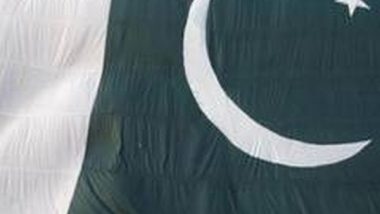
Islamabad is facing unprecedented pressure on debt servicing, both public debt as well as external debt, mainly due huge accumulation of debt during the tenure of PM Imran Khan in the last 3½ years. Though Covid pandemic was blamed for this massive build-up, critics attribute it to reckless policies and excessive overspending by the government.
Islamabad’s debt-to-GDP ratio had gone up to 88% in 2020 which was the highest in the CAREC region, according to a recent ADB report. Pakistan’s debt service was the highest at USD 15 billion. It accumulated more than USD 10 billion in new debt during the pandemic, according to ADB’s “COVID-19 and Economic Recovery Potential in the CAREC (Central Asia Regional Economic Cooperation) Region.”
The report found that direct health cost during the pandemic was the highest in Pakistan (USD 2,019 million) followed by Kazakhstan (USD 900 million) compared to other countries in the CAREC area. Higher health cost indicates less adoption of IT (Information Technology) to tackle Covid-19 in the country. Integration of IT and health sector is necessary to increase welfare measures and to reduce overall cost in health sector, which is apparently found lacking in Pakistan.
The under developed Pak digital infrastructure is vulnerable for exploitation, and may be used by Beijing in promoting its ‘Digital Silk Road’ projects, benefiting only its Chinese companies. In the absence of human capital investment over the last several decades, Pakistan’s digital divide is growing over time, increasing the country’s vulnerability during the ongoing financial crisis and the Covid pandemic.
Growth of massive public debt is attributed to the pandemic by Imran Khan. According to State Bank of Pakistan, the outgoing PTI (Pakistan Tehreek-e-Insaf) government added over PRs18 trillion to the public debt during its 3½ of stint, the highest liabilities accumulated by any government in the past 75 years. As a result, federal government’s debt jumped to PRs42.8 trillion by February 2022.
These figures imply that the PTI government added PRs14.2 billion/day on an average to the public debt against PRs2.7 billion/day during 2008 – 2018. The total public debt increased by a whopping 73% from September 2018 to February 2022. The situation is so alarming that the government was at the mercy of commercial banks paying 12.7% interest rates for borrowing money.
Meanwhile, external debt of the federal government increased at an alarming pace of 90% to PRs15.1 trillion during Imran Khan’s tenure. There was a net increase of PRs7.1 trillion in the external debt. Currency depreciation as well as borrowing for building forex reserves are the main culprits here.
However, this figure does not include PRs12.4 trillion worth of external government debt like loans obtained for reserves building and currency swap arrangements.
Value of Pak currency too massively depreciated to over PRs185 (against PRs124.2 in August 2018) in the country’s 75-year history, resulting in huge cost of external debt servicing.
Abid Hasan, former member of Pakistan Economic Advisory Committee and Federal Board of Revenue Tax Reforms Group noted that if Islamabad continues with a “business as usual” policy, it could end up taking aid from Bangladesh in a decade. He held that the Pak governments have gone around the world with a “begging bowl”. “We’re now drowning in debt and stuck in an anaemic growth orbit, and will continue to be this way since no government has pursued the deep reforms necessary to establish an economically strong Pakistan.” Hasan further viewed that Pakistan’s poor performance is its own fault, but Pak leaders conveniently blame their rivals and the IMF and the World Bank.
According to the Asian Development Bank, inflation in Pakistan is expected to pick up to 11% in FY2022 against official target of 8% due to significant currency depreciation and elevated global food prices from supply disruptions. Pakistan will continue experiencing strong inflationary pressures from the jump in global fuel prices resulting from the Russian invasion of Ukraine.
Against this backdrop, Pakistanis can expect very little respite for ameliorating their living conditions, even as the Pak Army continues to spend exorbitant sums on the defence sector.








